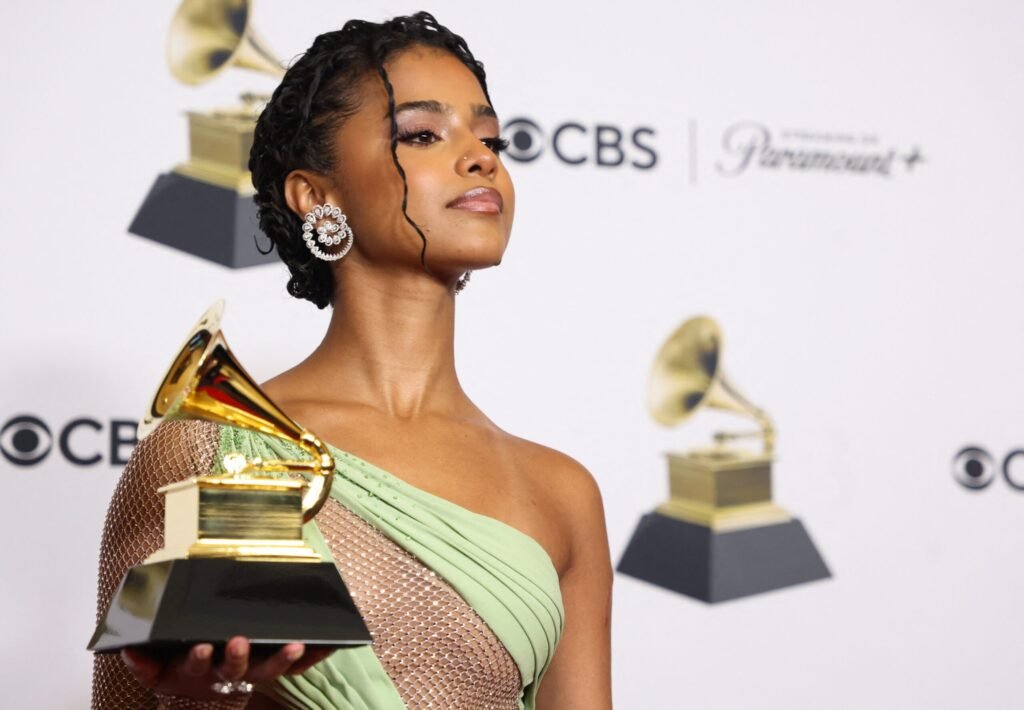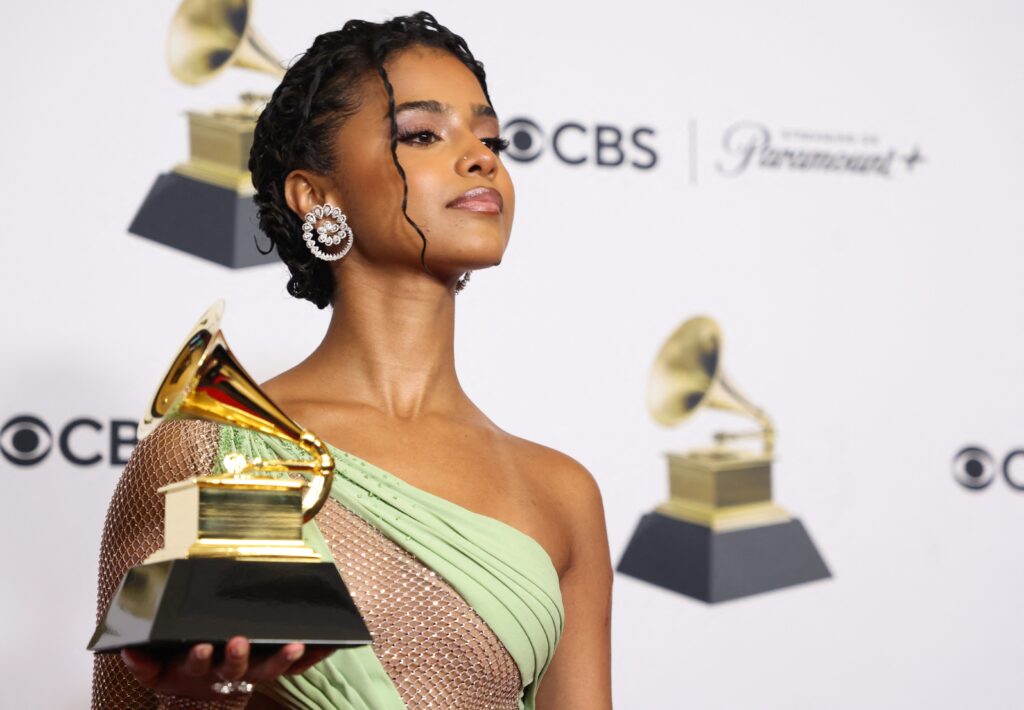Africa’s thriving musicians and artists are boosting the continent’s global influence and shaping international trends. These cultural entrepreneurs are also creating jobs for Africa’s expanding youth population and fueling economic growth.
But, as entertainment and media experts from PwC warn, growth in Africa’s entertainment industries “will be distributed unevenly, with some sectors stagnating while others skyrocket.” African governments, international partners, and global investors can all play a strategic role in unlocking the commercial potential of overlooked markets and creative economies across the continent.
African music, for example, has witnessed a meteoric global rise, with the likes of Wizkid and Tems “reshaping the sound and texture of pop music,” according to Rolling Stone. Afrobeats artists were streamed over thirteen billion times on Spotify in 2022. Revenue from the music industry in Sub-Saharan Africa grew by 24 percent last year, the fastest growth globally. Between 2017 and 2023, royalties for South African artists on Spotify have increased by 500 percent; Tyla, a twenty-two-year-old who earlier this year referred to herself as a “Jozi girl living the dream,” won the first Best African Music Performance award at the 2024 Grammys. And major labels like Audiomack and Universal Music Group have opened offices on the continent, investing heavily in African talent.
Africa’s television and film industry is also reaching new global audiences. Showmax, a streaming platform headquartered in South Africa, is ramping up production on twenty-one new and original African shows. Since 2016, Netflix has invested more than $175 million in African films, including a multi-title deal with a Nigerian production company. The Nigerian movie The Black Book was watched by over twenty million people in its first weeks, becoming at one point the third most-streamed movie worldwide. African film companies have inked deals with the likes of Walt Disney Animation Studios for original productions released globally on services such as Disney+, including the animated Iwájú series, for which Disney collaborated with London-based African storytelling company Kugali Media. Nollywood, the world’s second-largest film industry by production volume, generates $1.2 billion in annual revenues.
With Africa’s population projected to nearly double to 2.5 billion people by 2050, the continent will host one-third of the planet’s young people and the fastest-growing consumer markets for the entertainment industry. Music streaming revenues in Africa are expected to rise from $92.9 million in 2021 to $314.6 million by 2026. Platforms like Spotify, Paramount+, and Netflix are vying for a share of this expanding market with compelling, locally produced content. Nigeria, poised to become one of the ten biggest economies in the world by 2050, generated $45.2 million in revenues from music, television, and film streaming in 2022—a 55 percent increase compared to the year before.
Other creative industries, like gaming, have significant growth potential in Africa but haven’t yet seen breakthrough moments comparable to music, television, and film. The continent is the fastest-growing global market for the gaming industry, expected to generate more than one billion dollars in 2024 for the first time ever, with the number of African gamers doubling over the past five years—mostly driven by youth gaming on their phones. But local game developers have yet to gain a strong foothold on the continent or beyond, despite the clear potential for new and culturally rich gaming experiences rooted in the African context. Innovators like Guzo Technologies (which has participated in programs backed by Meta, where one of the authors works) are developing innovative gaming and learning experiences harnessing virtual reality, but there remain significant barriers to access and use for many Africans.
Some African governments, international partners, and investors are striving to boost their creative industries to stimulate growth, attract investment, and create jobs. In April 2024, Côte d’Ivoire partnered with a venture capital firm and bank to create a fund for entertainment startups. In October 2023, the International Finance Corporation (IFC) and Sony collaborated to invest in Africa’s creative industries. In announcing the initiative, the IFC highlighted the African creative economy’s “significant, untapped potential . . . for boosting economic growth and improving employment opportunities for young people and women.” Zambia announced a $100-million investment plan to transform its film industry. Actor Idris Elba is backing new film studios in Sierra Leone, Tanzania, and Ghana, while Senegalese Director Mati Diop is opening a new film production house.
But African governments, their international partners, and investors can do more to ignite Africa’s creative industries. Artists have too often succeeded in spite of, not thanks to, the state—where regulatory barriers, weak intellectual property protections, and exacting tax regimes may inhibit the creative economy. Development finance institutions can follow the IFC’s lead by offering blended finance options to de-risk similar investments in other countries. The Democratic Republic of Congo—historically considered a regional cultural superpower, especially in music—shows significant growth potential, for example. Contemporary Congolese stars are yet to experience success akin to that of their Nigerian and South African peers; even Congolese icon Fally Ipupa has less than 7 percent of Nigerian artist Burna Boy’s monthly listeners on Spotify.
Beyond their remarkable economic impacts, Africa’s cultural entrepreneurs are reshaping global perceptions of the continent. As one African analyst noted, “historically, when we talk about global soft power, Africa has never really been top of mind.” But through television series and films set in Africa and written by Africans, artists are rewriting the infamous “single story” that has shaped international perceptions of a continent ravaged by war, poverty, and disease. One African-British journalist wrote about how “Afrobeats artists were the best [public relations] team we could ever have asked for—talented, arrogant, and unapologetically African.” The World Economic Forum has heralded a “rising Afro Wave inspired by the arts and cultural leaders of African and Afro diaspora . . . [empowering] nations to participate more actively in global conversations, enhancing their diplomatic influence, and forging connections that extend beyond geopolitical boundaries on key themes, issues, and business opportunities.”
Some caution that there are challenges presented by the rapid rise and commercialization of African cultural industries. Nollywood’s roots in the Yoruba people’s traveling theater tradition, with rapid recording and distribution networks, may become consigned to history as the local film industry transforms. Some African artists have also rejected the ubiquitous term “Afrobeats”—they argue it is a catchall term for an incredibly broad and diverse set of musical genres. Burna Boy, the first African artist to sell out a US stadium, said, “it’s not fair to just join everybody . . . It’s almost like joining hip-hop, R&B, and dancehall into one thing and [calling] it ‘Ameribeats.’ It doesn’t do justice to what’s really going on.”
African governments, international partners, and investors can all play a critical role in further unlocking the potential and impact of the continent’s creative industries. However, they must ensure that African artists and entrepreneurs retain ownership and creative control amid increasing international engagement and investment. Whether that is successfully done will determine whether Africa’s cultural economies benefit from the hard work of the artists and whether creative industries across the continent can build a new, better-informed international appreciation for Africa’s economic and cultural power.
Tom Bonsundy-O’Bryan is a 2023 Millennium fellow at the Atlantic Council and Meta’s head of misinformation policy for Europe, Middle East, and Africa.
Josefina Bonsundy-O’Bryan is a Women in Africa laureate, La Caixa Foundation fellow, and lawyer at Withersworldwide.


